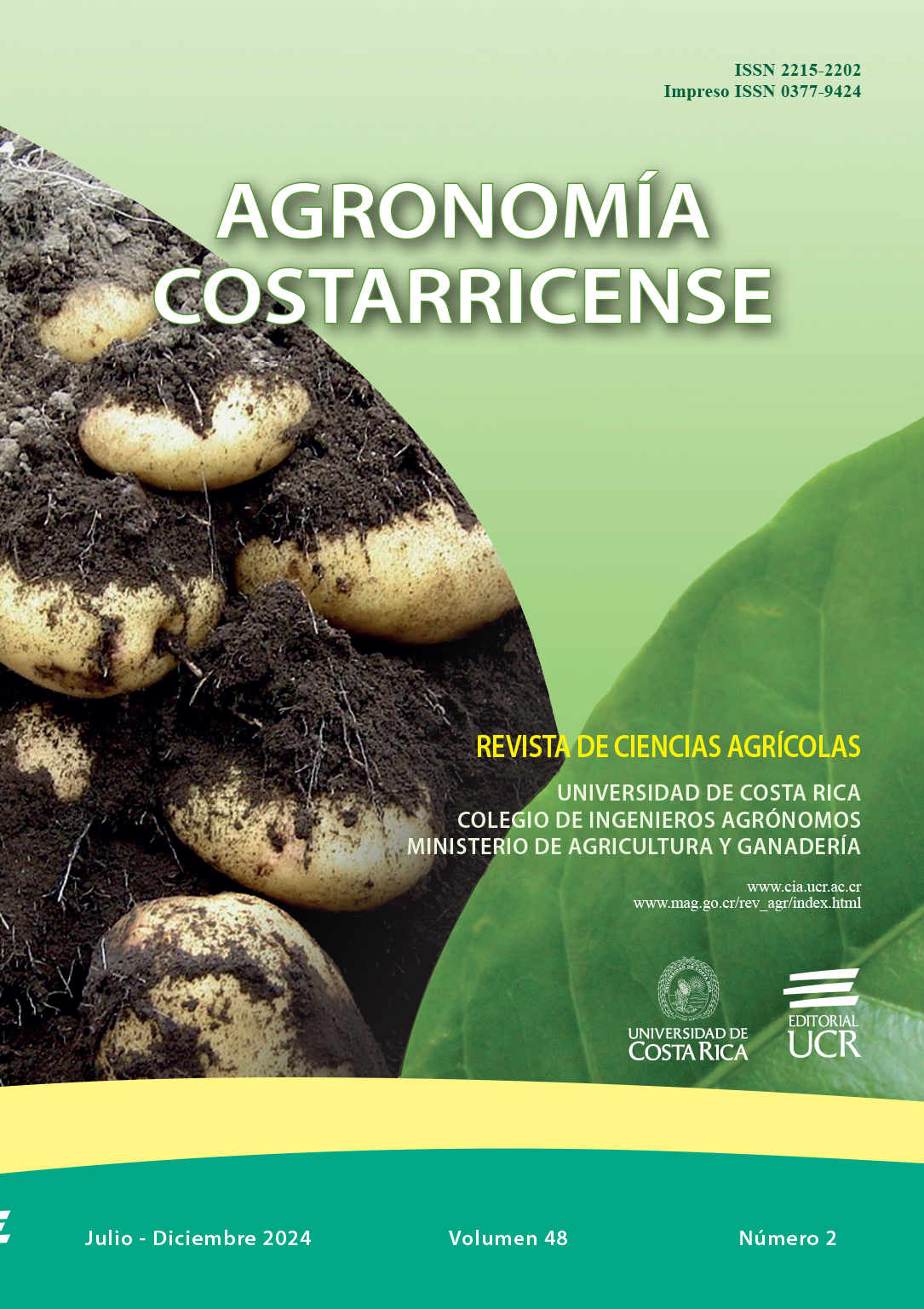Resumen
Introducción. La producción de banano es una de las actividades económicas más significativas para el país. Sin embargo, enfrenta serios desafíos debido a la presencia de diversos patógenos, entre los más significativos se encuentran los nematodos fitoparásitos que afectan el rendimiento y la calidad del cultivo. El uso de hongos nematófagos (HN) para el control biológico de nematodos es una alternativa para reducir la aplicación de productos químicos en cultivos agrícolas. En Costa Rica existe gran variedad de hongos debido a la diversidad de los suelos, por lo que el aislamiento y la correcta identificación de estos hongos es crucial para determinar su potencial antagonista. Objetivo. Aislar e identificar potenciales hongos nematófagos (PHN) presentes en muestras de suelo de plantaciones de banano de la región Huetar Atlántica. Materiales y métodos. Se analizaron seis muestras de suelo provenientes de cinco cantones de la región Huetar Atlántica de Costa Rica mediante el método de espolvoreado en placas con agar-agua en búsqueda de PHN. Para la selección y purificación de los PHN se utilizaron placas Petri con papa dextrosa agar (PDA), identificando las estructuras morfológicas para el diagnóstico a nivel de género. Los hongos identificados morfológicamente se replicaron y se conservaron en viales con PDA y en aceite mineral a 4°C. Se extrajo ADN de los PHN y mediante amplificación por PCR (Reacción de Cadena de la Polimerasa) y secuenciación de diferentes regiones del genoma (ITS, tef 1-alfa, rpb2 y β-tubulina), se identificaron molecularmente. Resultados. Se aislaron e identificaron doce hongos, entre ellos Trichoderma asperellum, Penicillium steckii, Purpureocillium lilacinum, Fusarium oxysporum, Fusarium sp., Fusarium pseudocircinatum, y Talaromyces sp. Conclusión. El descubrimiento e identificación correcta de PHN subraya la importancia de investigar su aplicación en programas de manejo integrado de plagas, así como la necesidad de evaluar su eficacia y seguridad en diferentes condiciones agroecológicas para maximizar su impacto positivo en la agricultura.
##plugins.facebook.comentarios##

Esta obra está bajo una licencia internacional Creative Commons Atribución-NoComercial-SinDerivadas 4.0.
Derechos de autor 2024 Agronomía Costarricense


